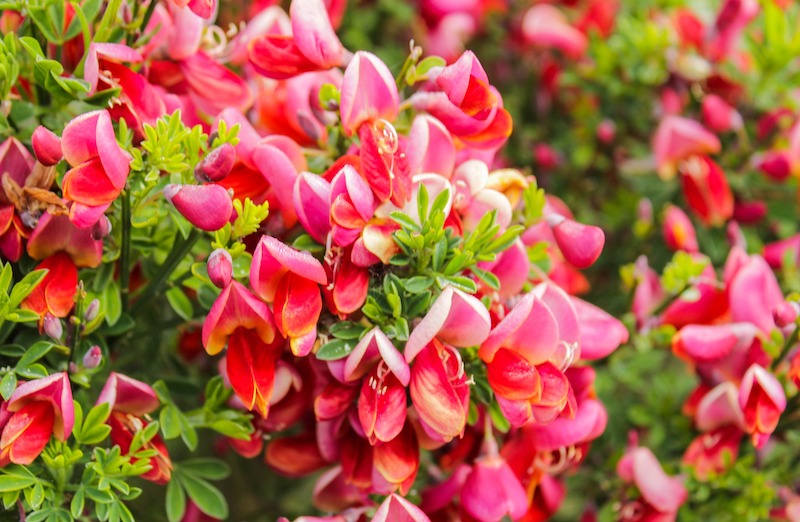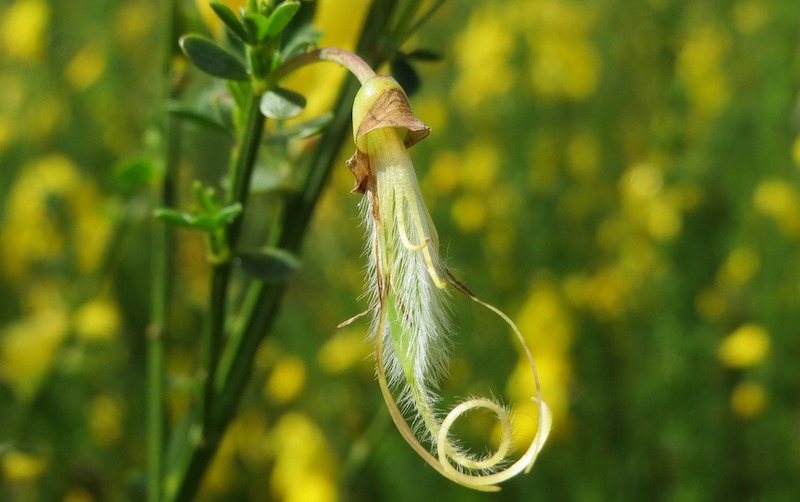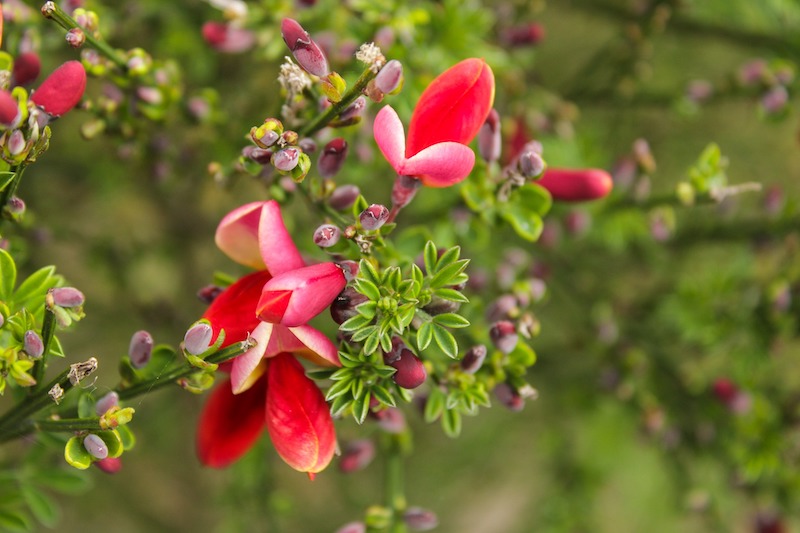Scotch Broom is an easy flowering shrub that can adapt to just about any garden setting. Come spring, it should be full of blooms as long as your planting site has well-draining soil and full sun. Pruning Scotch Broom at the right time is also key to setting this shrub up for success. Pruning Scotch Broom after it has finished blooming in the spring will encourage new growth and ensure plenty of blooms for next year.

Common Reasons Why Scotch Broom Isn’t Blooming
Scotch Broom is an upright flowering shrub grown in Hardiness Zones 5-8, that bursts into fragrant bloom during late spring to early summer. There are several colorful varieties of Scotch Broom, which all grow with minimal care in lean, low fertility soils in full sun locations. Scotch Broom doesn’t require extra care or fertilization to bloom; the key factors are plenty of sun, well-draining soil, and proper timing of pruning.
Pruning Scotch Broom To Help It Bloom
Scotch Broom blooms on old wood, so the proper time to prune is directly after blooming. Prune approximately 1/3 off the plant at most, working to open up the center of the shrub to air and sunlight. Begin pruning a plant young to encourage compact, sturdy growth, and a balanced shape. However, if you notice dead, diseased, or broken branches, you can prune and discard those at any time of the year. Additionally, Scotch Broom varieties can grow quite large and may outgrow their space. If planting multiple Scotch Broom shrubs, space shrubs 4 feet or more apart, depending on the variety, to allow more sun and airflow to reach each branch.

Fertilizing Scotch Broom To Help It Bloom
Scotch Broom prefers lean soil, so it does not require additional fertilizing at any point in the season. Make sure the planting site drains well though, and avoid planting Scotch Broom in clay soils. If clay soil is your only option, amend it with small gravel or sand to encourage fast drainage. Scotch Broom can be considered an invasive species in certain locations because it can easily reproduce by seed and will tolerate neglect in nutrient-depleted soils.
Scotch Broom is also a nitrogen-fixing shrub, meaning it turns atmospheric nitrogen into a usable form. The nodules on the roots of Scotch Broom are covered in bacteria where nitrogen fixation naturally takes place in the soil, adding nutrients that feed the plant and build healthy soil, so additional fertilization is not necessary.
Get Scotch Broom To Produce More Blooms
Scotch Broom is an easy-to-care-for deciduous, flowering shrub. If you live in a warmer region, Scotch Broom may remain evergreen. Sunlight is key in developing more flowers; it prefers at least 6-8 hours of direct sunlight daily for optimal flowering. Scotch Broom doesn’t require extra fertilization and is highly tolerant of dry, lean soils. Ultimately, the key to encouraging more blooming is a well-timed prune and a full-sun planting site.

Why Scotch Broom Isn’t Blooming
- Scotch Broom requires full sunlight to bloom
- Sunlight should be 6-8 hours daily
- Partial shade will reduce Scotch Broom flowering
- Scotch Broom requires well-draining soil
- Pruning should happen immediately after the current flowering season
- Prune when Scotch Broom is young for easier yearly maintenance
- Scotch Broom does not like to be moved, so do not disturb the root system
- Remove approximately 1/3 of branch height after flowering
 |
Author Chris Link - Published 01-26-2023 |
